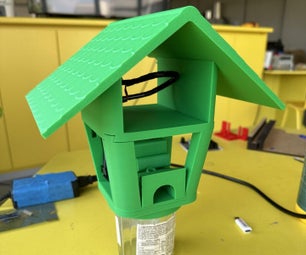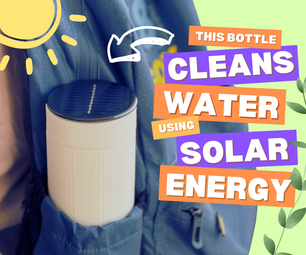Introduction: Make Your Own POV LED Globe
In this project I will show you how I combined a couple steel pieces with an Arduino, an APA102 LED Strip and a Hall effect sensor in order to create a POV (persistence of vision) RGB LED Globe. WIth it you can create all kinds of spherical pictures or even letters which is a definite eyecatcher. Let's get started!
Step 1: Watch the Video!
The video gives you all information you need to recreate the project. In the next steps though I will present you some additional information to make it even easier.
Step 2: Order the Components!
Here you can find a parts list with example seller (affiliate links):
Aliexpress:
1x Arduino Nano: https://s.click.aliexpress.com/e/_dULoNXh
1m x APA102 LED Strip (144 LED/m): https://s.click.aliexpress.com/e/_dV7LZhU
1x U18 Hall effect sensor: https://s.click.aliexpress.com/e/_d7c8hlG
1x LiPo Battery: https://s.click.aliexpress.com/e/_d6Y0yGq
1x TP4056 Protect/Charge circuit: https://s.click.aliexpress.com/e/_dX8n0hp
1x Boost Converter: https://s.click.aliexpress.com/e/_d7AJnzG
1x Ball Bearing: https://s.click.aliexpress.com/e/_dXjVbC2
1x 12V 3000RPM DC Motor: https://s.click.aliexpress.com/e/_dUU9TJC
1x 8mm/5mm Adapter: https://s.click.aliexpress.com/e/_dTdCYt0
Ebay:
1x Arduino Nano: http://rover.ebay.com/rover/1/711-53200-19255-0/1?...
1m x APA102 LED Strip (144 LED/m): http://rover.ebay.com/rover/1/711-53200-19255-0/1?...
1x U18 Hall effect sensor: http://rover.ebay.com/rover/1/711-53200-19255-0/1?...
1x LiPo Battery: http://rover.ebay.com/rover/1/711-53200-19255-0/1?...
1x TP4056 Protect/Charge circuit: http://rover.ebay.com/rover/1/711-53200-19255-0/1?...
1x Boost Converter: http://rover.ebay.com/rover/1/711-53200-19255-0/1?...
1x Ball Bearing: http://rover.ebay.com/rover/1/711-53200-19255-0/1?...
1x 12V 3000RPM DC Motor: http://rover.ebay.com/rover/1/711-53200-19255-0/1?...
1x 8mm/5mm Adapter: http://rover.ebay.com/rover/1/711-53200-19255-0/1?...
Amazon.de:
1x Arduino Nano: http://amzn.to/2w9b05H
1m x APA102 LED Strip (144 LED/m): http://amzn.to/2vi8hIa
1x U18 Hall effect sensor: http://amzn.to/2xDJydU
1x LiPo Battery: http://amzn.to/2xDkT9h
1x TP4056 Protect/Charge circuit: http://amzn.to/2xDyj5h
1x Boost Converter: http://amzn.to/2wfyaFV
1x Ball Bearing: http://amzn.to/2xDvEsn
1x 12V 3000RPM DC Motor: http://amzn.to/2wJvJ1e
1x 8mm/5mm Adapter: http://amzn.to/2wJgnd8
Home Improvement store:
1x 200x200x20mm Steel base plate
3x 40x500x4mm flat steel
M4, M5 bolts & nuts
8mm aluminum rod
Step 3: The Mechanical Build!
At this point you should create the mechanical part of the project. For that you can follow the guidelines from the video and use the 3D model or .stl file in order to print the circle and the cuboid.
Step 4: The Electrical Build!
Here you can find the schematic of the project. You can download it in a higher resolution if you left click on the image twice and select a resolution on the left. Here you can also download the example Arduino sketches that I created for this project.
Attachments
Step 5: Success!
You did it! You just created your own POV LED Globe!
Feel free to check out my YouTube channel for more awesome projects:
http://www.youtube.com/user/greatscottlab
You can also follow me on Facebook, Twitter and Google+ for news about upcoming projects and behind the scenes information:
https://twitter.com/GreatScottLab
https://www.facebook.com/greatscottlab














